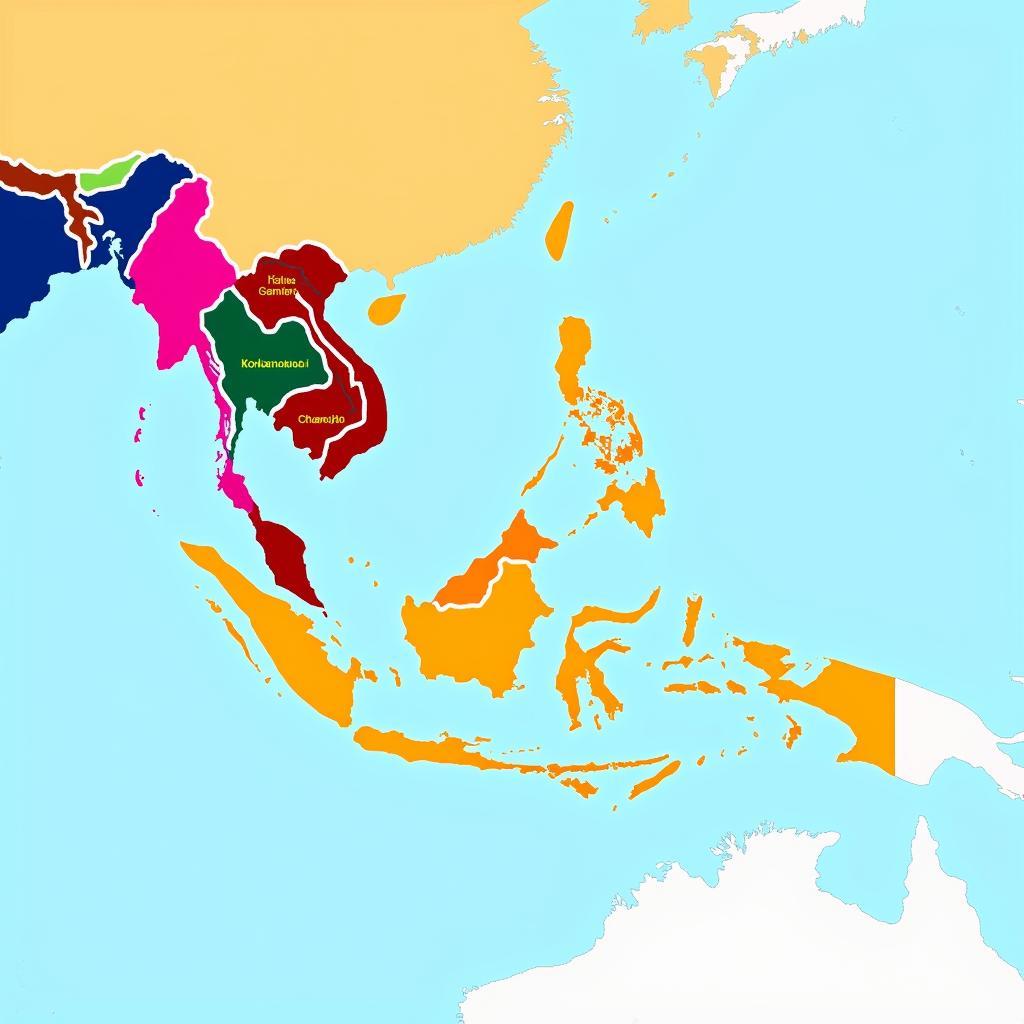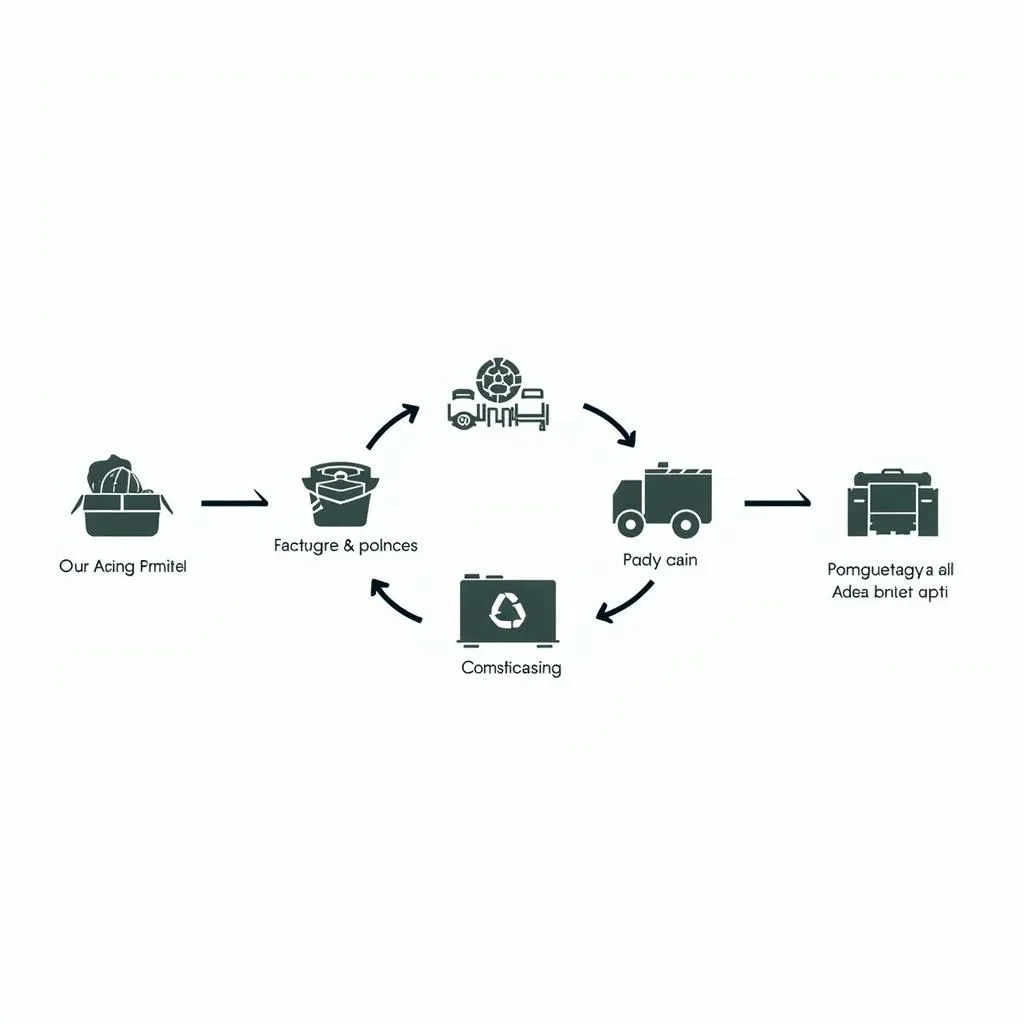The 10 Member States Of Asean represent a vibrant tapestry of cultures, economies, and political systems. This dynamic intergovernmental organization plays a crucial role in promoting regional cooperation and integration in Southeast Asia.
Southeast Asia, a region of vibrant cultures and dynamic economies, is home to the Association of Southeast Asian Nations (ASEAN). Comprising 10 member states, ASEAN plays a vital role in fostering regional cooperation and development. Understanding the individual nations that make up this bloc is key to appreciating the complexities and potential of this region. This article delves into the 10 member states of ASEAN, exploring their unique characteristics and contributions to the organization.
Unveiling the 10 ASEAN Member States
ASEAN, founded in 1967, initially consisted of five member states. Over time, it has expanded to include all ten countries in Southeast Asia. Each nation brings its own unique strengths and challenges to the table, contributing to the diverse landscape of the ASEAN community. Let’s explore these 10 member states of ASEAN in more detail:
- Brunei: A small but wealthy nation known for its oil and gas reserves. Brunei also plays an important role in promoting Islamic culture within ASEAN.
- Cambodia: A country with a rich history and cultural heritage, Cambodia is working to rebuild its economy and infrastructure after decades of conflict.
- Indonesia: The largest member state by population, Indonesia is a major economic power in the region and a key player in ASEAN diplomacy.
- Laos: A landlocked country known for its natural beauty and traditional lifestyle, Laos is gradually opening up to the world and integrating into the regional economy.
- Malaysia: A multicultural nation with a thriving economy, Malaysia is a hub for trade and investment in Southeast Asia.
- Myanmar: A country undergoing significant political and economic transitions, Myanmar faces numerous challenges but also holds great potential for growth.
- Philippines: An archipelago nation with a vibrant democracy, the Philippines is known for its warm hospitality and English proficiency.
- Singapore: A highly developed city-state, Singapore is a global financial center and a leader in innovation and technology.
- Thailand: A popular tourist destination known for its beautiful temples and beaches, Thailand is also a major agricultural producer and exporter.
- Vietnam: A rapidly developing country with a young and dynamic population, Vietnam is becoming an increasingly important player in the global economy.
10 asean member states offer a rich blend of cultural diversity and economic potential. This dynamic combination makes ASEAN a significant player on the world stage.
 Map of ASEAN Member States
Map of ASEAN Member States
Why Knowing the 10 Member States of ASEAN Matters
Understanding the composition of ASEAN provides valuable insights into the region’s dynamics. From economic cooperation to political alliances, the interplay between these 10 member states shapes the trajectory of Southeast Asia.
Economic Implications
The diverse economies of the 10 member states of ASEAN create a wide range of opportunities for trade and investment. From resource-rich nations like Brunei and Indonesia to manufacturing hubs like Vietnam and Malaysia, the complementarity of these economies fosters regional growth.
Political Landscape
ASEAN serves as a platform for dialogue and cooperation on political issues affecting the region. By bringing together the 10 member states, ASEAN helps to manage tensions and promote peaceful resolutions to conflicts.
anggota asean represents a powerful force for economic and political stability in Southeast Asia. Understanding the individual members allows for a deeper appreciation of the region’s complexity and potential.
What are the 10 Member States of ASEAN and When Did They Join?
The 10 member states of ASEAN joined the organization at different times, reflecting the evolving political landscape of Southeast Asia.
- Indonesia, Malaysia, Philippines, Singapore, and Thailand: Founding members (1967)
- Brunei: Joined in 1984
- Vietnam: Joined in 1995
- Laos and Myanmar: Joined in 1997
- Cambodia: Joined in 1999
10 anggota asean dan kapan bergabungnya provides a historical context to the organization’s development and highlights the growing integration of Southeast Asian nations.
How many countries are in ASEAN?
There are 10 countries in ASEAN.
What are the benefits of being an ASEAN member?
ASEAN membership offers benefits like enhanced trade, economic cooperation, and political stability.
 ASEAN Cultural Diversity
ASEAN Cultural Diversity
Conclusion
The 10 member states of ASEAN form a dynamic and diverse regional bloc, driving economic growth and promoting political cooperation in Southeast Asia. Understanding the individual countries within ASEAN is essential for navigating the complexities and opportunities of this vibrant region.
FAQ
- What does ASEAN stand for?
- What is the purpose of ASEAN?
- Which country is the largest in ASEAN by population?
- When was ASEAN founded?
- What are the main challenges facing ASEAN?
- How does ASEAN promote economic cooperation among its members?
- What is the role of ASEAN in maintaining regional peace and security?
For further information on ASEAN, explore asean or 10 bansang kasapi ng asean.
Need support? Contact us 24/7 at Phone: 0369020373, Email: [email protected], or visit us at: Thon Ngoc Lien, Hiep Hoa, Bac Giang, Vietnam.


